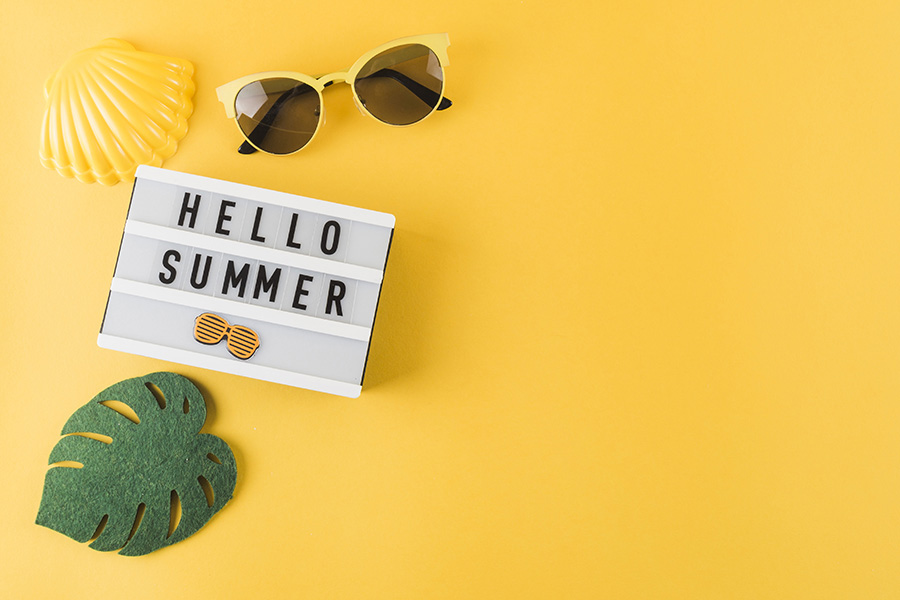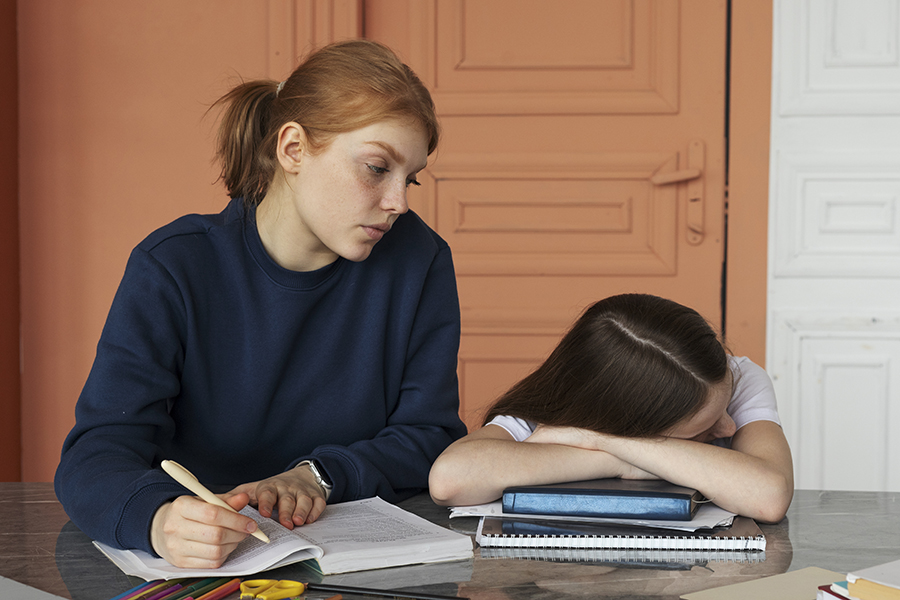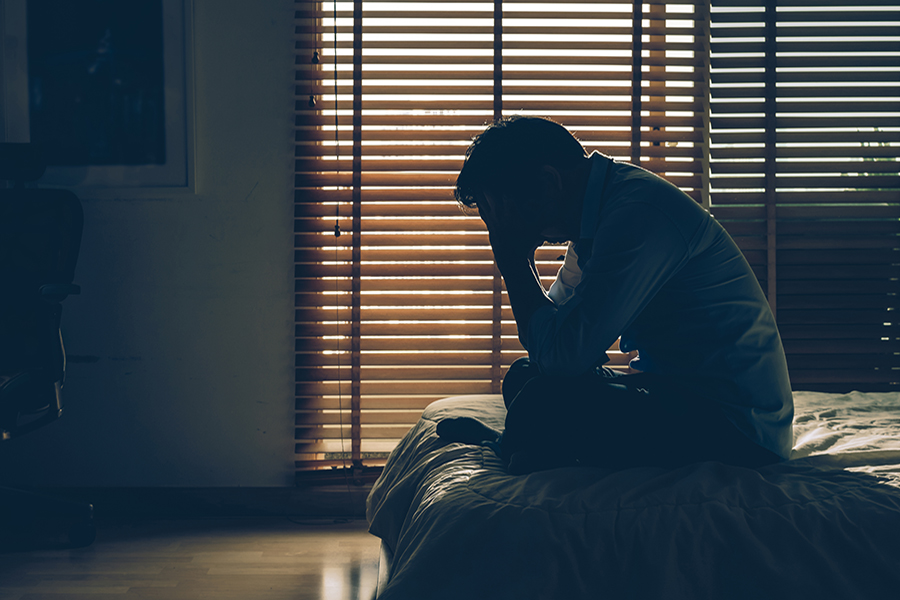We all look forward to the summertime, especially the kids. There is no school, and they can spend their time with their friends hanging out or taking advantage of the many activities in the neighborhood. There may be a neighborhood pool to go to, cycling around the block, visiting a friend who has a trampoline, playing baseball, and many more activities that are enjoyed by all.
Summertime safety should always be considered, no matter what the kids are up to, from wearing helmets while cycling or skateboarding to wearing a lot of sunscreens to protect their skin from the sun’s UV rays; using a safety checklist will help you keep your kids safe.
What is a Summer Safety Checklist?
Everyone’s lifestyle is different, so it is important to create a summer safety checklist that makes sense for your family. Some items will be on everyone’s list, for example, applying sunscreen to protect them from the sun’s UV rays. While not everyone will be to access a pool or a trampoline, these items could be on your checklist in case the kids receive a special invite to someone’s place for a day of fun. There may be other items that are particular to your lifestyle. For example, spending time at the beach invites another specific list of important safety items you may want to consider, e.g., life jackets, always swimming with a buddy, etc.
Why is a Summer Safety Checklist Important?
We want our children to have the best lives they can, and that means keeping them safe while they enjoy the outdoors playing with their friends. Preventing injuries and accidents is one way to ensure they can maximize the good times. A family unit is often impacted when one member of the family has an accident. Consider a sunburn.
A bad sunburn will hurt the child a great deal. It will be sore for a few days, and their skin will probably peel. They will need to stay indoors and cover up whenever they are outside. A family trip to the cottage or the beach could be disrupted when one or more of your children are sunburnt at the wrong time, just as you are heading to the cottage the next day. Scrapes and broken arms or legs can equally affect the entire family, in addition to the child missing out on many activities.
The Ultimate Summer Safety Checklist for Kids
The following are a few of the items you may want to have on your summer safety checklist for your family. Keep it in a visible location so that you and your family are reminded of it each day. A good place is often on the fridge held in place with magnets. Here is our ultimate summer safety checklist for kids:
Protect your kids from the sun
Apply sunscreen to all exposed areas to protect your kids from the sun’s rays. Have them wear hats and even sunglasses to protect their eyes! Note that if they are swimming, use waterproof sunscreen and apply it fairly often after they have been in the pool. Cloudy days can still be hazardous to the skin; encourage the kids to use sunscreen on these days as well. If they are sweating, playing sports, etc., apply sunscreen every couple of hours. Little ones often want to show their independence by applying their sunscreen. Help them make sure they cover all areas and encourage them to wash their hands afterward to avoid getting sunscreen into their eyes which can irritate them.
Wearing hats with wider brims and clothes that have SPF protection built into them is encouraged. Even swimsuits with arm coverings help protect from serious sunburns. Staying out of the sun from earlier morning to later in the afternoon is another way to protect the kids from sunburns and skin damage.
Wearing sunglasses can also protect your kid’s eyes, and they will like wearing cool sunglasses. Always ensure they are labeled UVA and UVB for the protection of their eyes.
Protect Your Kids Form Bugs
Bugs are almost everywhere and depend on the location as well as the type of weather you receive. Mosquitos need warm, moist conditions to lay their eggs, black flies can be found in the northern bush country, and of course, there are bees almost everywhere as well. Mosquitos have been found to carry diseases, some quite serious for humans, e.g., West Nile Virus. There are also ticks that carry Lyme disease and are picked up when we brush against plants and leaves.
Apply insect repellant liberally to guard against ticks and mosquitos. Check your children’s clothes, legs, and arms for any signs of mosquito bites and ticks. Follow recommended methods to remove ticks.
Note: these insect repellants are not designed to be ingested. They are toxic and can be deadly if swallowed. This is a danger to smaller children who might try to drink some of the repellants.
Before bedtime, have your children take a shower or bath. It is a good idea to wash off any sunscreen and insect repellant to avoid soiling the bedsheets. In addition, pollen gets on everything, including your hair. Washing your hair and body before bedtime prevents transfer to the bedsheets and pajamas, where you would continue to breathe these items into your system.
There are a variety of natural repellants available on the market. If you plan to use some of these, take the time to investigate their effectiveness and if they are toxic in any way.
Wearing long-sleeve shirts and pants outside provides further protection from sunburn, mosquitos, and ticks.
If there are stagnant pools of water around your home, drain them to avoid providing a breeding ground for mosquitos to lay their eggs.
We all want to smell nice and wear scented perfumes or colognes, use scented soaps and provide our kids with fruit juices. Unfortunately, these strong scents attract insects such as wasps, bees, and other insects, increasing the chances your child can be stung.
Avoid Dehydration
Becoming dehydrated during hot weather, especially if your child is playing organized sports or playing pick-up sports on the street, is a huge concern. Make sure your kids take water breaks and that there is always lots of water available. If your child or adults are feeling dizzy or very hot, have them drink water and spray them down with a spray bottle to cool them off. Take some time away from the play to cool off in the shade.
Wear a Helmet
Falls can occur anytime, and striking your head on the hard cement sidewalk of the road can cause serious head injuries, even death. Children are encouraged to wear helmets while using scooters, bicycles, skateboards, roller skates, and skiing. In some jurisdictions, there may even be a bylaw regarding the wearing of helmets. Helmets protect adults as well, so set a good example for your kids. They could save your life.
Street Safety
Even if you live in a quiet neighborhood with little traffic, teaching your kids about street safety can help save their lives. Most kids will want to ride their bikes or scooters on the road vs. the sidewalk, so they must be watching for errant drivers who may not be paying attention. Teach them to:
- Never run out from between two parked cars into the street
- If they see a car coming, teach them to move off the street to the sidewalk
- Teach them to always give the car the right of way and not assume they will stop
- Teach them about road safety
- There are many guidelines about kids playing on the road, whether it is ball hockey, basketball, cycling, using a scooter, etc. Educate your kids on how to be safe playing on your street if they cannot play in your front yard or in the backyard.
Practice Food Safety
We all love to barbeque in the summer, and that means food is often left outside in hot conditions longer than it should. Hot weather is the perfect time for bacteria to grow, especially on meat and sauces. We also do not wash our hands as often as we should, allowing bacteria to be spread from our hands to food utensils and other people.
Some of the approaches to consider to manage and restrict food born illnesses include:
- Wash your hands before preparing food, and wash your hands after handling raw foods.
- Ensure your children wash their hands before every meal
- Avoid cross-contamination between raw foods, other foods, plates, or utensils
- Make sure your food is well cooked; use a meat thermometer if in doubt
- Unrefrigerated foods left in the sun for more than two hours should be disposed of
- Keep all of your perishable foods in the fridge until they are ready to be consumed
Pay Attention to Swimming Activities
Every year thousands of children are injured or die in drowning-related accidents at lakes, pools, and even hot tubs. Summertime is the time for the water, and this is when you need to pay attention.
- Every child must be supervised at all times when around a pool
- Distractions such as cell phones should not be used
- Focus on the kids; it only takes one or two seconds for a child to get into stress in the water
- Floatation devices cannot always be depended on. Treat the child wearing one as if they are not wearing a floating device at all.
- Teach your kids how to swim. Take them to swimming lessons; it could save their lives
- Take a CPR course and ensure you know how to administer CPR to young children
- If a child inhales water into the lungs, they can die hours later. Learn about the signs and symptoms.
Kids should never be left unsupervised. There should always be an adult in the pool area actively supervising the kids.
Ensure gates to the pool area are locked at all times and ensure that there are no access areas for kids to crawl through the fence. Some folks will place motion alarms in the pool area to warn them of someone in the pool unsupervised.
Drowning is usually silent. After all, the person is underwater and cannot reach the surface to call for help or splash. It can happen in a few seconds. Never leave a pool unsupervised.
Trampolines Are Fun When Used Properly
Read and understand the guidelines that come with your trampoline to avoid accidents. General guidelines include:
- One child at a time should use the trampoline
- Children younger than six years should not use the trampoline
- No somersaults
- Install safety nets to prevent kids from falling off the trampoline
- Keep the area around the trampoline clear of toys, structures, and obstacles
Doing Yard Work with the Kids can be Fun
However, there is dangerous equipment that they should be kept away from:
- Keep the kids off lawnmowers
- Keep them well away from the lawnmower exhaust, where grass, sticks, and stones could hit them
- If you use a snowblower in colder climates, keep kids and adults away from the snow exhaust. Hard snow and ice chunks can hurt
- ATVs are fun; however, many people die every year on them because they are not trained and too young to operate them.
Guidelines suggest the following:
- Do not allow children under 16 to ride on an ATV
- Push mowers should not be operated by children under 12
- Ride-on lawnmowers should not be operated by children under 16
- Snowblowers should be operated by children under 16
Keep Home Play Grounds Safe
Kids love to climb, especially on home playgrounds. They can also fall, and parents should take the following steps to ensure theirs is safe for the kids.
- Ensure there are no sharp edges that can rip clothes and tear skin
- Routinely check the structure to make sure none of the parts has become loose
- Surfaces under the playground structure should provide a soft landing
- Concrete and asphalt are too hard and cause broken bones or worse
- Even dirt can become compacted and very hard
- Usually, 9 inches of mulch or wood chips have been found to offer the best protection
- Routinely check the area around the playground to remove toys and debris that may be dragged into the area. They can hurt if someone falls on these items.
Key Points, Conclusion, or Final Thoughts
Parents need to find the right balance between protecting their kids from the many dangers that exist in and around our neighborhoods while they are playing with their friends. If they are too restrictive, then the child does not learn, may become resentful, and miss out on many activities in the neighborhood. Our kids can have fun and be protected at the same time. Wearing helmets while riding bicycles or scooters or skiing, applying suntan lotion, staying hydrated, and practicing pool safety are just a few of the common sense things parents should focus on to keep their kids safe and healthy.








